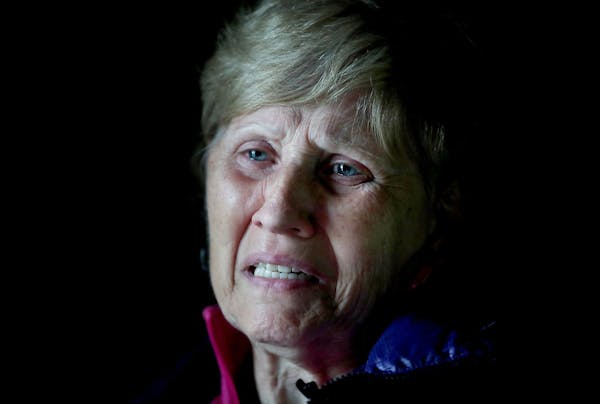More than 500 children from abusive homes never received a required court-appointed advocate in 2017, meaning they went through the legal system without anyone assigned to look after their interests, according to a legislative audit released Friday.
The legislative auditor's report on the guardian ad litem program was also critical of its board, saying it has established few standards for guardians' work, provided limited financial oversight of the program and hasn't actively monitored the performance of guardians.
And with a surge in child protection cases, the program has struggled to meet the increased need for guardians ad litem to represent the interests of abused and neglected children in court, according to the audit. Some judges have even given up asking for one, knowing that a guardian ad litem is probably unavailable, the audit found.
Guardians "are, at times, having to make decisions between visiting children or writing reports and often have as many as 60 children assigned to them at a time," said Kristen Trebil-Halbersma, the administrator for the state guardian ad litem board since October. "The board is unable to meet these children's needs given the drastic shortage of resources. Our vulnerable children deserve better."
Created more than 40 years ago, the guardian ad litem program in Minnesota oversees about 520 advocates, both paid and volunteer, who play a crucial role in some of the most wrenching legal disputes. Guardians ad litem are appointed when a child's welfare is a concern to the court and to advocate for the child's best interest, said Jodi Munson Rodriguez, the audit's evaluation manager.
Federal and state law require that children have a guardian ad litem in cases involving child abuse, neglect, abandonment and custody disputes. State law provides broad guidelines for workers to conduct an investigation, prepare recommendations to the court and monitor proceedings.
In recent years, however, caseloads have soared, and with it complaints about failures of the guardian ad litem program to protect some of Minnesota's most vulnerable children.
"For the last 10 years, there always seems to be complaints about the program," said Sen. Warren Limmer, R-Maple Grove, who spoke during a legislative hearing to discuss the audit Friday. "The report has a few quicker-turn recommendations that will cost money, but we don't have enough time in the session for a thorough discussion. So what are the absolute immediate financial needs?"
To that end, DFL Gov. Mark Dayton has included $3.7 million for the program in his supplemental budget. The program hasn't seen a significant funding boost from the Legislature since the guardian ad litem board moved from the oversight by the judicial branch and became an independent agency in 2010. The current budget is about $16 million.
"If the Legislature doesn't step up and support the funding increase, they lose the right to complain about it in the future," said Rich Gehrman of Safe Passage for Children of Minnesota.
From 2013 through 2017, child protection case filings have increased 55 percent statewide, said guardian ad litem board chair Crysta Parkin. Much of the heavier caseloads came after Dayton's task force called for new screening procedures in child protection cases three years ago.
Managers and coordinators who supervise and train workers are carrying caseloads as well, Parkin said. Guardians ad litem were assigned to 7,971 cases in 2017.
No county has carried a greater burden in unassigned cases than Hennepin County. They have 293 such cases impacting 643 children, said Laurie Kusek, the county's guardian ad litem program manager. The county would need 45 new positions to cover the backlog, and wait times for assignment is 41 days, she said.
"I can't tell you how frustrating this is," said Kusek, who attended Friday's hearing. "Our numbers just skyrocketed and they never leveled off. It's really damaging to the kids because the guardian is often the only constant they know during the court proceedings."
The state recommends a guardian handle no more than 30 cases, but every two days Kusek's office is receiving requests for 16 cases, she said. Kusek doesn't fault the board, which came in having to create a new structure and hire positions, which cost a lot of money. The administrative recommendations made in the audit shouldn't be difficult to accomplish, but "we can't continue to cover the unassigned case problem with a Band-Aid approach," she said.
"I worry about it falling through the cracks," said Kusek. "We can't do everything. We are treading water to meet the needs of the children."
The audit, started last April, is the first comprehensive review of the guardian ad litem program. The evaluation reviewed documents, laws and 124 randomly selected assigned cases.
The audit recommended the Legislature clarify the guardian ad litem's role, particularly in family court. For example, the board hasn't established criteria for how often a guardian visits a child. The audit found that guardians made two to four visits 41 percent of the time, but 12 percent never met with the child.
The audit team surveyed 145 district court judges, half of whom noted the difficulty of obtaining a guardian in family court. Several judges said they no longer request guardians, even though it's required, because they know the program can't fulfill the request.
During the Friday hearing, Munson Rodriguez highlighted six key recommendations for the guardian board. They ranged from developing caseload guidelines and monitoring the board's financial health to establishing measurable performance goals and a more transparent complaint process.
Trebil-Halbersma and Parkin said the board has already taken steps to improve its performance, including implementing financial controls, establishing procedures for the statewide collection of complaint data and a committee to analyze caseloads.
David Chanen • 612-673-4465

Baseball Metro Player of the Year packs up his five tools and leaves

Prep baseball 2024: 35 Minnesota stars who the recruiters covet
Police searching for St. Paul home intruder who raped, robbed woman

Friend heard money, relationship woes from man tied to Chanhassen killing who took his own life

